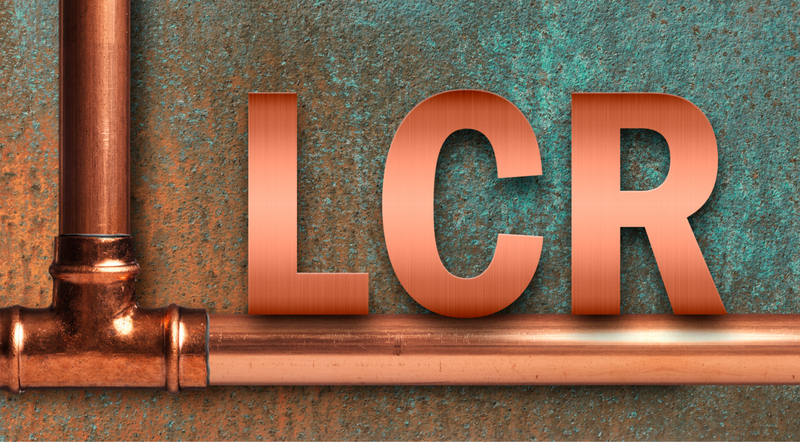Lead & Copper Inventory Report

The Lead and Copper Service Line Rule (LCR) is a significant regulation established by the United States Environmental Protection Agency (EPA) to safeguard public health by minimizing lead and copper levels in drinking water. These metals can be harmful when consumed, especially for vulnerable populations like children and pregnant women. Learn more about the LCR and reporting measures we are taking to ensure transparency in our community's most important asset.
What is the Lead and Copper Rule?
Implemented in 1991, the LCR requires water utilities to monitor drinking water at customer taps. If lead or copper levels exceed the action level - 15 parts per billion (ppb) for lead and 1.3 parts per million (ppm) for copper—the utility must take steps to reduce these concentrations. These steps can include optimizing corrosion control treatment, replacing lead service lines, and educating the public about the health risks and steps they can take to reduce exposure.
Why is it Important?
Lead and copper can enter drinking water through the corrosion of plumbing materials. Lead pipes, solder, and fixtures can leach these metals into the water supply, posing serious health risks. Lead exposure can cause developmental issues in children, including reduced IQ and attention span, learning disabilities, and behavioral problems. In adults, it can lead to cardiovascular issues and kidney damage. Copper, while essential in small amounts, can cause gastrointestinal distress and liver or kidney damage when ingested in large quantities.
Recent Revisions
In December 2020, the EPA finalized the first major update to the LCR in nearly 30 years. The revised rule strengthens protections by requiring more rigorous testing, greater transparency, and proactive measures to identify and replace lead service lines. These updates aim to ensure that communities are better protected and informed about the quality of their drinking water.
How Does It Work?
- Monitoring and Testing: Utilities are required to collect water samples from homes with lead service lines or plumbing materials and analyze them for lead and copper levels.
- Corrosion Control: If action levels are exceeded, utilities must implement corrosion control treatment to prevent the metals from leaching into the water.
- Public Education: Utilities must inform the public about the risks of lead and copper in drinking water and provide guidance on how to reduce exposure.
- Lead Service Line Replacement: If lead levels remain high despite corrosion control, utilities are required to replace lead service lines.
What is a Lead and Copper Inventory Report?
A Lead and Copper Inventory Report is a comprehensive document that details the presence and levels of lead and copper within a water distribution system. This report is typically mandated by regulatory agencies, such as the Environmental Protection Agency (EPA) in the United States, to ensure public health and safety.
Here are some key components of a Lead and Copper Inventory Report:
-
Identification of Sources: The report identifies potential sources of lead and copper in the water system. This can include old lead service lines, plumbing fixtures, and solder used in piping.
-
Sampling Data: It includes data from water samples taken from various points within the distribution system. This data helps to determine the concentration levels of lead and copper.
-
Compliance Status: The report assesses whether the water system complies with regulatory standards for lead and copper levels. The EPA’s Lead and Copper Rule sets action levels at 15 parts per billion (ppb) for lead and 1.3 parts per million (ppm) for copper.
-
Risk Assessment: It evaluates the potential health risks associated with detected levels of lead and copper, especially for vulnerable populations like children and pregnant women.
-
Mitigation Measures: If elevated levels are found, the report will outline steps that the water utility will take to reduce lead and copper concentrations. This could involve replacing lead service lines, optimizing corrosion control treatments, and public education efforts.
-
Public Notification: The report often includes information on how the public will be informed about the findings and any necessary actions they should take, such as using water filters or flushing pipes.
The ultimate goal of a Lead and Copper Inventory Report is to protect public health by ensuring that drinking water meets safety standards and by implementing measures to reduce exposure to these harmful metals.
View the LCR Inventory Report
Below you will find the link to view the most recent LCR Inventory report.
How to read this report: This is a document that the Town of Carthage updates annually and so some of the tabs detail instructions for completion. The tabs with information of most interest to the public will be the "Inventory Summary" and the "Detailed Inventory".
If you need assistance understanding the report, or if you have questions, please contact Town Hall.
LCR Inventory Report (Updated September 2024)(XLSX, 7MB)
The Lead and Copper Rule is a critical measure to ensure safe drinking water and protect public health. By adhering to the LCR, water utilities can minimize the risks posed by lead and copper, fostering healthier communities. The recent updates to the rule underscore the ongoing commitment to improving water quality and safeguarding public health.